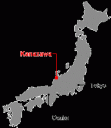Over the winter break, I went home to Washington state for a week, to spend Christmas with my family. School started up again on Tuesday, the 8th, leaving almost a week in between. I’ve been wanting to go to Thailand while I’m in the hemisphere, and so I did.
Unfortunately, plane tickets were already gone when I tried to make arrangements around the end of October. I eventually found a travel agency that had tickets in reserve, but the earliest available flight departed on Friday, the 4th. I figured that it could be my only chance though, so I bought the expensive tickets and made a visit of one evening and two days.
*************************************************
I stayed in a pretty nice hotel, the Imperial Queen’s Park, in Bangkok. Not a full-on luxury hotel, but quite high-end. The location was convenient, the price through the travel agency wasn’t bad, and they had late checkout, which was why I chose them (so I had my room until leaving for the airport at 7pm, Sunday). After staying in Japanese hotels, my room felt huge.
You can see the bowl of complementary fruit that was waiting. It had pomelos and some red fruits that looked vaguely like bell peppers. From digging around a bit online, I think the mystery fruits were probably either “rose apples” or “Malay apples.”
Anyhow, I arrived on Friday evening, had an overpriced-but-good hotel dinner, and went to bed early. Thailand is two hours behind Japan, so my 7pm dinner was at 9pm as far as my internal clock was concerned, and I wanted to get an early start the next day.
*************************************************
I spent most of Saturday in Ayutthaya. Now just a mid-sized town, Ayutthaya was the capital of the kingdom of the same name from 1350 until 1767, when Burma sacked the city. The army looted the temples and then smashed and burned everything that they could, making a particular point of hacking apart statues of Buddha.
Time and nature have transformed this specific bit of desecration into one of the city’s most famous images.
Throughout the modern town, ruined temples remain in scattered pockets.
The bell shaped buildings with pointed tops are chedis, which are the same thing as stupas in India and pagodas in East Asia: towers with Buddhist reliquaries buried underneath them. The rounded tower is called a prang, and is of Khmer origin. I’m not sure, but I think that Thai prangs are stupas, while the original Khmer prangs were simply temple towers.
This restored chedi gives some idea of what the others used to look like.
It was built to honor Queen Suriyothai, who in 1548 secretly dressed as a warrior to follow her husband into battle and died taking a blow meant for him.
Another restored and functioning building is Viharn Phra Mongkonbophit.
This worship hall was built about 400 years ago and has been rebuilt several times. It houses a large statue of Buddha.
I’ve got to say, while I really like the buildings in Thai temples, the statues of Buddha that I saw all struck me as, well, not as good as what I’ve seen in Japan. The carving (and/or casting) always seemed a bit plastic and unnatural. The differences in representation were fascinating, though. Thai Buddhas are slender and (of course) their features haven’t been Sinicized. And they seemed to always be smiling. Whereas Buddhas and bodhisattvas in Japan usually exude serenity and wisdom, the Thai Buddhas that I saw expressed happiness and contentment.
************************************************
I could go on about Thai Buddhism versus Japanese varieties, but I want to get this post up, so that and the Bangkok half of my trip will have to wait until my next entry. Until then.















